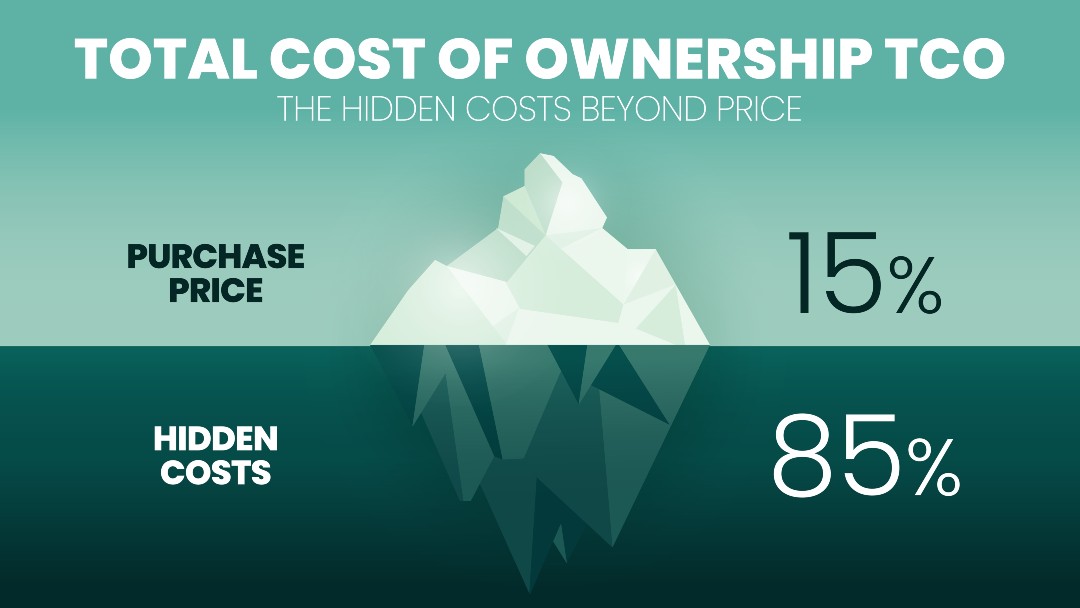Around 40% to 90% of new digital products end up with a very low market adoption rate. Avoid the development risks to prevent your new digital product from being part of such failure statistics.
Digital products, such as apps, games, ebooks, videos and more, attract considerable user interest. But under the hood, the development process is complex and involves several risks. Developers face a small margin of error, and several things could go wrong at every stage of the development process. Here are the top risk factors when developing digital products.
1. Inadequate market research
Many business managers do not understand the market before they commit to product development. Often, their idea of what the customers need differs from what customers expect.
The product may not solve any pressing customer problem. Promoters may perceive their products as groundbreaking and innovative, but consumers fail to see the value.
Customers may not understand the product even if the product delivers value. Consider cryptocurrency and metaverse-based products. The vast majority of potential customers do not understand how these technologies work or how they can gain value from such products.
The product teams may have misplaced priorities. For instance, the team may focus on the technology instead of the features or use cases. The underlying technology plays a critical role in product success. But focusing too much on the technology and neglecting the use case is a mistake.
Even when the product teams get everything related to the product right, they may price the product wrongly, leading to poor uptake. As high as 72% of new products do not meet revenue targets.
To overcome such risks,
- Define and identify the target audience. Many project teams feel they can build a product that appeals to everyone, but this is rarely the case in reality. Focus on a specific need.
- Conduct thorough market research before committing to the product. Do not go by numbers and statistics alone. Get real-time qualitative feedback from the customer.
- Make sure the product adds tangible value to users. Focus on the solutions the product delivers rather than packing features and make the product complex.
- Focus on the UX and work backwards. Adopt the best technology that makes it possible to deliver optimal UX. Ensure easy scale-up and the flexibility to co-opt new features to cater to changing customer needs.
- Perfect an MVP and get feedback on the MVP before committing to full-blown development. An MVP delivers a functioning product without any bells and whistles. It need not have all the features that will find inclusion in the full-blown product. Prioritise the features and include only the essential ones first.
- Focus on keeping the product simple. Make sure the product is easily accessible, and users can find the features they need quickly.
- Factor in pricing considerations from the start without leaving it for the last minute.
2. Poor project management
Often, digital products suffer from poor planning and project management. The reasons include:
- Ambiguity on product specifications. Project estimates go awry when there is a lack of clarity on the requirements.
- Unrealistic time frames. Many project managers underestimate the time it takes to develop specific components of digital products. For instance, a mobile app needs front-end and back-end development, wireframes, user experience (UX) and user interface (UI). Many project managers do not factor adequate times for these stages or testing.
- Poorly defined roles and responsibilities. Lack of clarity on who does what leads to redundant work. No one may take responsibility for specific tasks, or conflicting authority emerges. Such situations occur due to poor communication and leadership skills.
- Scope creep. Scope creep may occur due to changing customer requirements or a lack of focus. At times, new possibilities become evident after iteration. The development team runs behind the new possibility, throwing the original budget and timelines awry. Consider an example of developing a video conferencing app. The developers may consider adding a cloud-based recording option as an afterthought. Scope creep eats up resources and throws timelines away. It can cause the ruin of the entire project.
The consequence of poor project planning is scope delays and budget overruns. Customer priorities change fast. The inability to release the product on time may lead to the product becoming obsolete even before launch.
To keep projects on schedule and avoid scope creep:
- Hire competent project managers with a track record of getting things done.
- Build logically justified checkpoints at the beginning. Define critical parameters regarding features, quality, timeline, and project cost.
- Take feedback from potential users early and at every stage of the product development process. Do not keep feedback for the last. User insights offer valuable course-correct opportunities.
- Strengthen communication and collaboration within the project times.
- Document the roles and responsibilities of all team members at the beginning of the project. Assign specific responsibilities for each deliverable.
- Avoid too many reviews that take time away from doing actual work.
3. Insufficient budget and resources
Developing a digital product requires a significant investment of time and money. But unexpected costs come up, and even budgeted costs get out of hand quickly.
Under-resourced projects lead to functional bottlenecks. The process efficiency suffers, and the output lacks quality.
Some of the hidden or unexpected costs include:
- The cost of hiring experts. The talent crunch plaguing the tech sector worldwide continues, with no signs of easing. Talented employees demand the moon in salaries and optimal working conditions.
- Recurring expenses, such as app store fees, server hosting fees, and ongoing maintenance costs. Many enterprises underestimate such costs.
- Costs associated with developing and launching a minimum viable product (MVP). For instance, the cost of the MVP will vary for B2B and B2C products. Many enterprises do not get it right. Some of these costs depend on the product design and are difficult to estimate beforehand.

To avoid cost overruns and under-funded projects:
- Interview experts and resource persons who have executed similar projects. Develop realistic budgets using such insights.
- Monitor project resources by tracking resource availability, workload allocation and project progression schedules.
- Make sure the project owner has the commitment and focus on the product. Ideally, a project manager should not handle more than two projects simultaneously.
- Right size the product development team. Excessive staffing leads to slack and inefficiencies. An overworked team will lead to unorganised workflows, mistakes, and missed deadlines. The team will always be in a fire-fighting mode, and product quality suffers. Many enterprises, especially start-ups working on a limited budget, try to do too much with too little. Trying to overcome budget constraints by overworking the team becomes counterproductive. Product quality soon takes a dip, and customer satisfaction scores go down.
- Extend the product development timeline to cover the time, money, and labour shortage. A race to gain a first-mover advantage without delivering a high-quality, bug-free product can backfire.
4. Stakeholder issues
Investors often look at the immediate bottom line. They prefer short-term gains rather than long-term success. As such, they may have unrealistic expectations. Even CEOs and the C-suite may not have first-hand knowledge of digital product development. They may approve the project looking at its potential benefits but remain clueless about the technical facet of the project. Pressure from such quarters may force the launch of half-baked products, leading to poor customer adoption and failure.
Amidst such stakeholder pressure, the project team may ignore feedback from the end user.
To avoid such situations,
- Deliver value continuously. Go for small wins upfront to demonstrative value and retain stakeholder interest.
- Mark progress through product roadmap, mock-ups, wireframes, or prototypes. These markings convince stakeholders their investments are paying off.
- Document end-user feedback at every iteration. Use such feedback to convince other stakeholders.
5. Inadequate testing
Many project managers skip testing owing to time pressures. They make up for delays in the development process by reducing testing to meet the product release deadline. Some developers may skip beta testing altogether. But failure to conduct thorough testing can lead to products full of bugs and issues.
Poor UX leads to negative reviews and the product failing sooner rather than later.
The product can also have security vulnerabilities. Security breaches can result in data theft, financial losses, and reputational damage. The development team may become vulnerable to legal ramifications.
To avoid risks related to inadequate testing:
- Invest in qualitative user testing and performance testing. User testing gathers valuable feedback, especially on UI and UX. Performance testing evaluates product performance under various conditions. For instance, it makes explicit how the suite performs under different OS and hardware configurations. It makes sure the product can withstand any contingency.
- Test prototypes with focus groups and get user feedback.
Use UserTesting Human Insights Platform to avoid digital product development risks. The UserTesting platform offers qualitative feedback from genuine users. Product developers run targeted user tests through the platform at any stage of the development process. They gain real-time qualitative feedback and valuable AI-powered insights from the user’s feedback. Project managers can leverage UserTesting’s vast contributor network for their user base. Or they can onboard their user base and run the tests easily through the platform. The development team gets critical pain points the user faces when using the product and feedback from experts who review the product.












